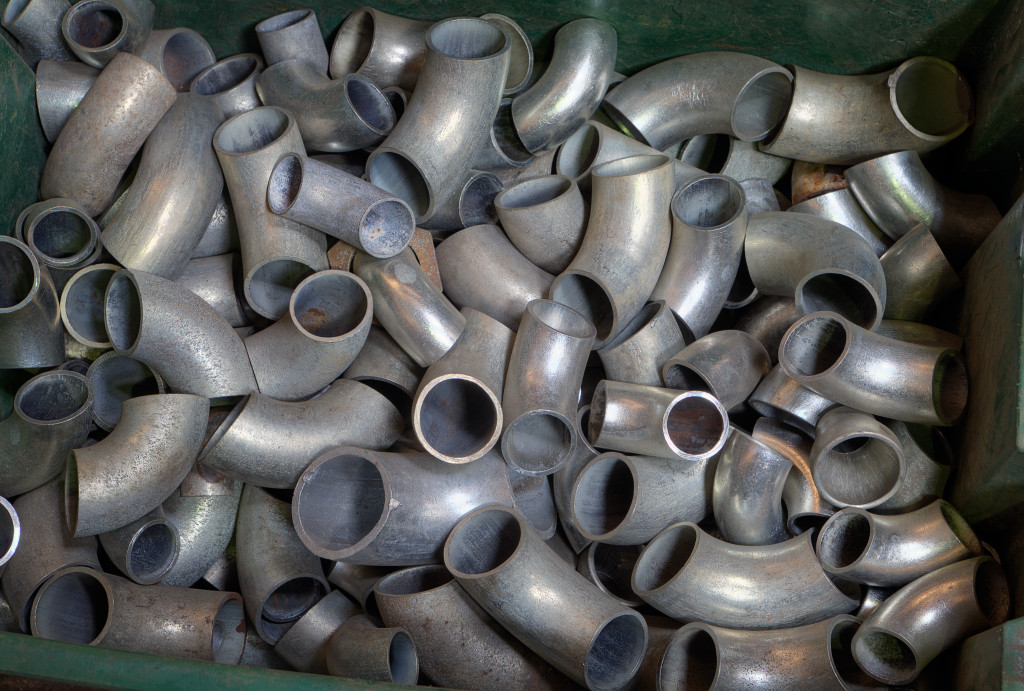Stainless steel and aluminum are two commonly used metals in residential and commercial construction. They have a similar appearance and a wide range of applications. But only of them is an alloy, and that is stainless steel. Does this matter when determining which of two is the better metal?
There are several key differences between stainless steel and aluminum, not just whether one is alloy and the other isn’t. Knowing those differences can help you decide which can generate higher profits for your business. So without further ado, let’s compare the qualities of aluminum and stainless steel.
Aluminum
Aluminum is an element with low density, non-toxic components, high thermal conductivity, and excellent corrosion resistance. It has a silvery-white surface that is soft, malleable, and lightweight.
In residential or commercial construction, aluminum is often used to make window frames, fencing, or solar panels. However, it’s not the sturdiest compared to other metals. Aluminum tends to break when subjected to force in certain ways. As such, it requires a unique fabrication process called extrusion.
Extrusion forces the aluminum to go through a die or a series of dies to make it adopt a specific shape. It puts less stress on the metal than standard fabrication processes, allowing aluminum to maintain its strength. Though you can also fabricate aluminum using standard methods, the result may be a brittle product because of the stress it has undergone.
Despite its weaknesses, aluminum is still considered a valuable material in construction. Its malleability allows you to cut it and shape it easily. In addition, its sheer weight makes it suitable for automotive applications. You can find aircraft and vehicle parts made of aluminum. It may not be the most durable material, but it can limit weight and increase the performance of aircraft or automobiles.
Aluminum has one more advantage: sustainability. As a 100% recyclable material, you can use reclaimed aluminum instead of a brand-new one. Reclaimed aluminum can also be melted and reprocessed through extrusion. The process would consume less energy and cost less than producing new aluminum.
Stainless Steel

Stainless steel is an alloy, which means it combines two or more metals. True enough, stainless steel has at least 10.5% chromium and a maximum of 1.2% carbon by mass. These components make stainless steel highly corrosion-resistant, durable, and heavier than aluminum.
These qualities have earned stainless steel a shining reputation as railings, fencing, and furniture. In other industries, like medical, stainless steel has a purpose, too. They’re typically used to make surgical instruments and dental apparatuses.
In terms of fabrication, stainless steel undergoes more processes than aluminum does. Stainless steel must be cut, joined, and welded when used as structural steelwork. The cutting process saws and burns the alloy, while welding connects it to other alloys.
The second crucial metal fabrication process is cold forming and heat treatment. The former increases the alloy’s yield strength by plastic deformation at room temperature. On the other hand, heat treatment alters stainless steel’s mechanical, physical, and chemical properties. Stainless steel—despite its name—can also be subject to low temperatures during the heat treatment process. Extreme heat or cold lets you achieve your desired hardness or softness of stainless steel.
Lastly, stainless steel also undergoes surface finishing treatments. While you don’t need to paint or coat stainless steel—as its natural appearance is appealing enough—its applications make it more appropriate for the alloy to display cosmetic enhancements. For example, if you manufacture stainless steel window frames, you need to polish their surface and rough-cut the edges. It would make the finished product look more streamlined.
You can also manufacture colored stainless steel. Its applications include revolving doors, wall panels, and elevators. But instead of painting on the alloy, you’ll apply a colored film over it. The colored film is made by a chemical process that involves high temperatures.
As for its other benefits, stainless steel is also recyclable. Recycling stainless steel is economically viable because of its valuable alloy elements. For that reason, 84% of steel components in U.K. buildings are now recycled, while 10% are reused.
Key Takeaways
Considering all the information above, we can conclude that the key differences between aluminum and stainless steel are as follows:
- Aluminum is an element, while stainless steel is an alloy with iron and chromium components
- Aluminum is lighter and less durable than stainless steel
- Aluminum is cheaper than stainless steel
- Stainless steel takes longer to fabricate because it requires a lengthy refining process
Overall, either metal can give you significant profits. But stainless steel may deliver more promising outcomes than aluminum. Its premium quality will allow you to sell at higher prices. In addition, the demand for stainless steel is constant, so you won’t lose customers as long as its price remains affordable for your market.



